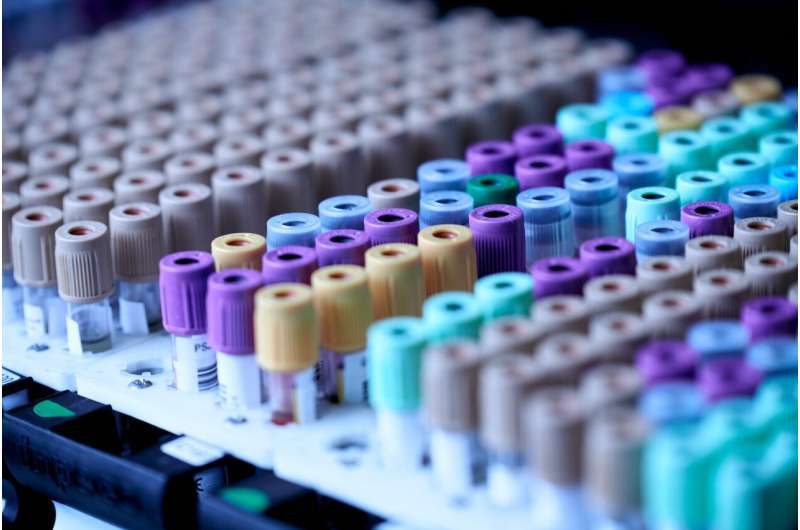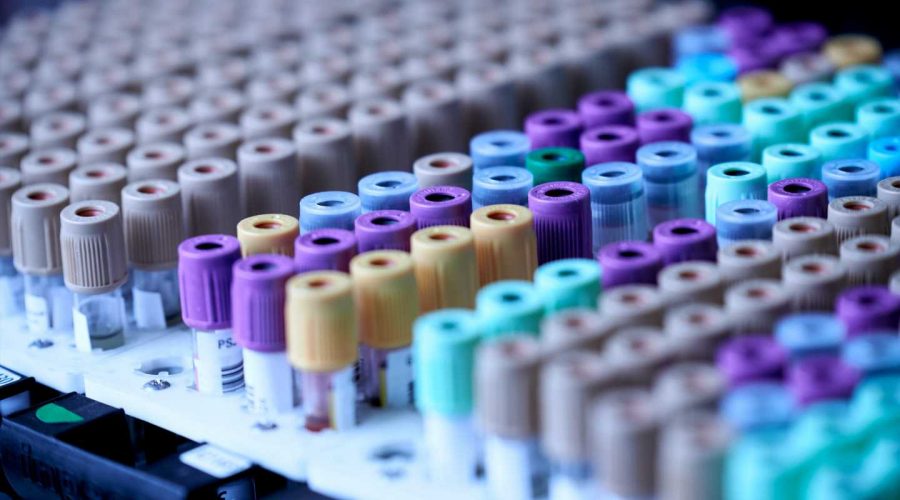Clonal hematopoiesis may be more common among pediatric cancer survivors than the general population

Researchers identified a higher rate of clonal hematopoiesis (CH) and prevalence of treatment-induced STAT3 gene mutations in blood samples from a large cohort of survivors of pediatric cancer, compared with age-matched controls.
The study is published in Cancer Discovery.
Pediatric cancers are often treated with aggressive chemotherapy and radiation, which can adversely affect children’s developing tissues and cause long-term effects. Previous studies have suggested that survivors of pediatric cancer experience markers of accelerated aging at both physiological and molecular levels.
There are conflicting reports of whether pediatric cancer survivors exhibit a higher rate of CH—the aging-related accumulation of mutations in blood stem cells that may predispose an individual to cancer and other chronic health conditions—than the general population. Because clonal populations of CH-affected cells grow larger with age, they can be harder to find in a relatively young population of pediatric cancer survivors using current diagnostic approaches.
“Most studies only report CH starting around 50 years of age,” Zhang said. “For a cohort of childhood cancer survivors with a median age range of around 32 years, we have to look deeper—beyond the clones that are detectable by standard exome sequencing.”
Along with co-senior author John Easton, Ph.D., and first author Kohei Hagiwara, Ph.D., Zhang, Robison, and colleagues performed deep sequencing on a panel of 39 CH-associated genes in blood samples from 2,860 survivors of pediatric cancer enrolled in the St. Jude Lifetime Cohort—a cohort of individuals treated for pediatric cancer at St. Jude who survived for five or more years after diagnosis, with a median follow-up time of 24 years—and 324 controls with no history of cancer. The deep sequencing allowed for the identification of clones as rare as 0.1% of total cells.
The researchers also sought to assess whether CH clones driven by normal aging differed from those driven by cancer therapy in terms of mutated genes, types of mutations, and clonal expansion dynamics. To differentiate age-related CH-clones from therapy-related CH clones, they used data from the control cohort to estimate the probability of a CH event occurring naturally at each patient’s age. They then used data from the survivor cohort to estimate the age-adjusted likelihood of developing CH following a given cancer treatment. Each CH event was inferred to be age-related (iAR) or treatment-related (iTR) based on which scenario was more likely.
CH was present in 15% of pediatric cancer survivors, compared with 8.6% of control individuals. Among the survivors, treatment with alkylating agents, radiotherapy, and bleomycin were significantly associated with an increased risk of CH. Certain cancer diagnoses—Hodgkin lymphoma, soft tissue sarcoma, germ cell tumors, rhabdomyosarcoma, neuroblastoma, non-Hodgkin lymphoma, and acute lymphoblastic leukemia—were also associated with an increased risk of CH.
Zhang, Robison, and colleagues identified several genes that were differentially mutated between iTR cases and iAR cases, including STAT3, which has not been previously characterized as a CH-associated gene among cancer survivors. The prevalence of STAT3 mutations was 17.9% among iTR patients and 6.25% among iAR patients, and the mutations were significantly enriched in survivors of Hodgkin lymphoma. Because survivors of Hodgkin lymphoma have higher survival rates following aggressive treatment than other tumor types, Robison suggested that these findings may inform researchers on patterns that may emerge in other survivor populations as they age.
The researchers performed single-cell, whole-genome sequencing on a handful of samples harboring a common STAT3 mutation. STAT3 mutations were highly enriched in T cells isolated from peripheral blood. The analysis further revealed a pattern of mutations that matched closely with COSMIC SBS25, a mutation signature known to be associated with exposure to the chemotherapy procarbazine in Hodgkin lymphoma cells.
Zhang and Robison stressed the importance of continuing to follow up with these patients to better understand how cells with CH mutations behave as patients age. “We need to follow these patients longitudinally to understand the clinical implications of having a clone and how the clones evolve and expand over time,” Robison said.
In the meantime, the researchers suggest that their study may help persuade physicians to reduce their usage of procarbazine in pediatric patients, a practice that is already being implemented in some cancer centers, including St. Jude.
“The data are telling us that CH mutations are important biomarkers that have potential clinical implications for risk of adverse long-term outcomes among the growing population of survivors of childhood cancer,” Robison said. “The research methods applied provide new insights and a new level of research on clonal hematopoiesis that will inform future studies.”
Limitations of this study include young age relative to survivors’ life expectancy, a limited number of CH genes sequenced, and a relatively small sample size for the single-cell, whole-genome sequencing experiments.
More information:
Kohei Hagiwara et al, Dynamics of age- versus therapy-related clonal hematopoiesis in long-term survivors of pediatric cancer., Cancer Discovery (2023). DOI: 10.1158/2159-8290.CD-22-0956
Journal information:
Cancer Discovery
Source: Read Full Article
